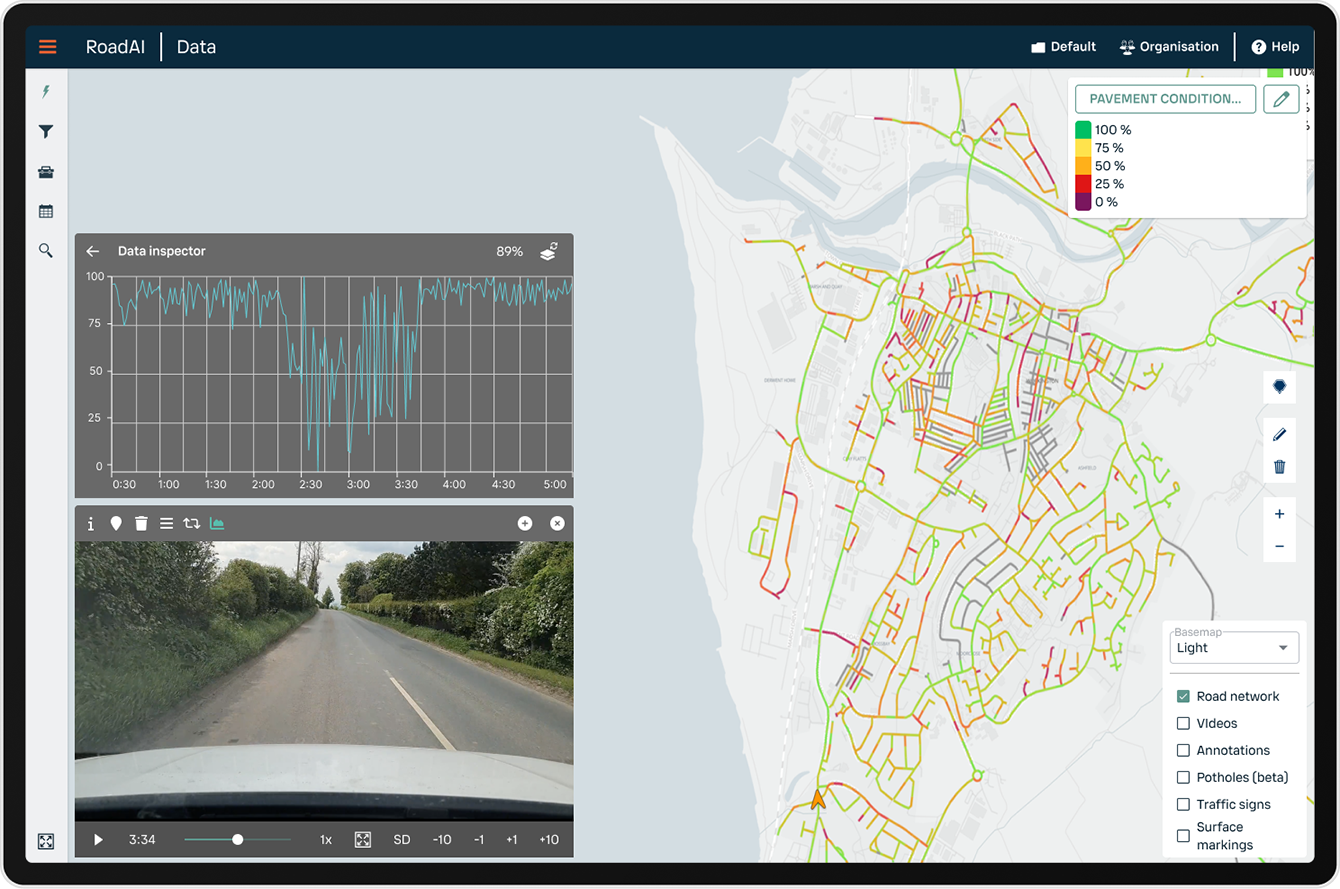How does RoadAI deliver on reliability and repeatability?
Find out how we continuously ensure RoadAI's data accuracy and repeatability to provide our customers with the quality they deserve.
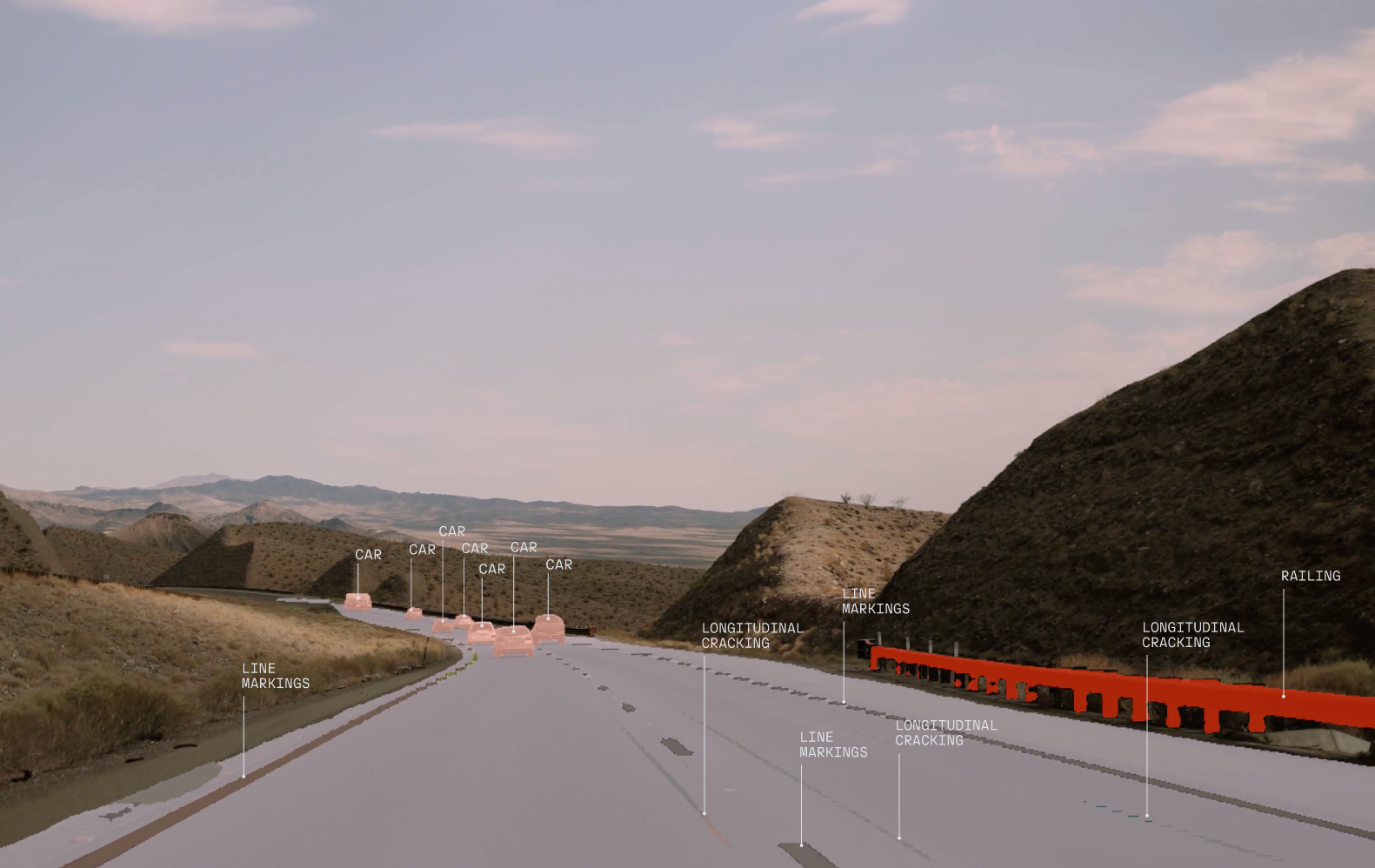
AI is transforming road assessment — but can it truly outperform traditional surveys?
If you’re used to relying on manual processes to assess the state of your roads, switching to an Artificial Intelligence-based system like RoadAI might seem like a bit of a leap. But maybe it’s not such a leap after all. Real-world testing of AI for road surveys is revealing just how reliable and consistent it can be when used for road maintenance.
So how does RoadAI measure up in areas such as speed, accuracy and repeatability? How is the data captured and used? And do the results really match those provided by experienced survey professionals? Basically, does the solution provide all the benefits that you expect without compromising on the quality and consistency of data?

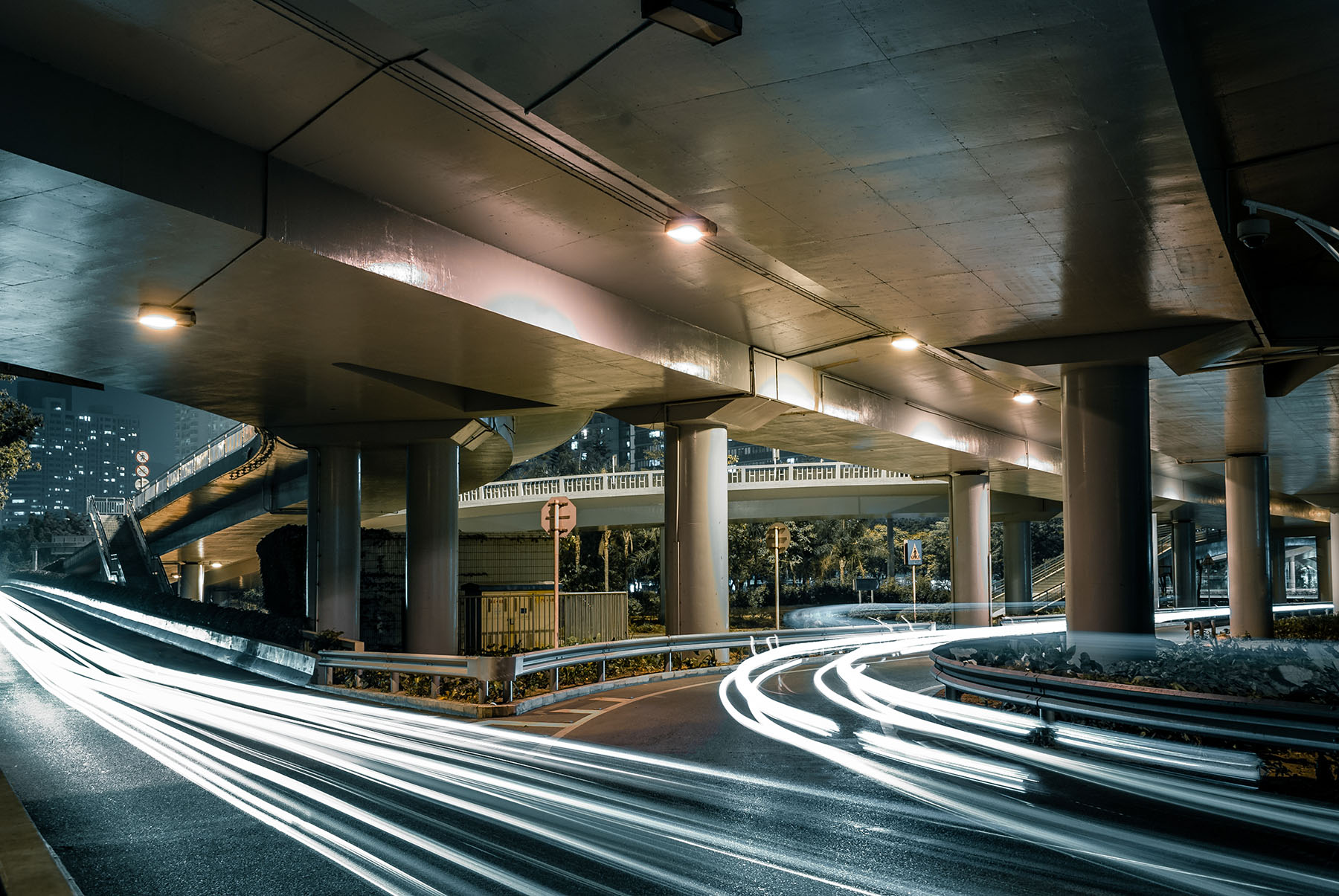

Real-world tests
We partnered with several RoadAI customers and an independent consultant to carry out a series of tests designed to answer these questions and to find out whether RoadAI passes key accuracy and repeatability thresholds.
We know how vital the accuracy and reliability of data is to each of our clients, so this robust test programme is a key element in our RoadAI product roadmap. It takes nothing for granted and allows us to compare RoadAI data against information generated by the professional human surveyors who currently undertake the task.
To ensure that the results were reliable and trustworthy, the tests were carried out in real-life conditions rather than a highly controlled lab-like environment.
RoadAI vs human surveyor
Our objective is to make sure RoadAI is at least as good and trustworthy as survey professionals in assessing road conditions and guiding maintenance decision making. And with RoadAI taking care of the road condition analysis it means your human resources are freed up to focus on actual maintenance plans.
Comparing RoadAI with manual visual survey results
We wanted to compare RoadAI with manual visual survey results to make sure that you can trust it to assess and analyse road conditions accurately and consistently.
40km worth of data
The data was collected by two vehicles following the same 40km route. The study captured 2002 observations is HDMIF format at a 20 meter resolution.
Four datasets
We also collected the data from two human surveyors (H1 and H2) and two RoadAI applications, and compared human with human and RoadAI with RoadAI.
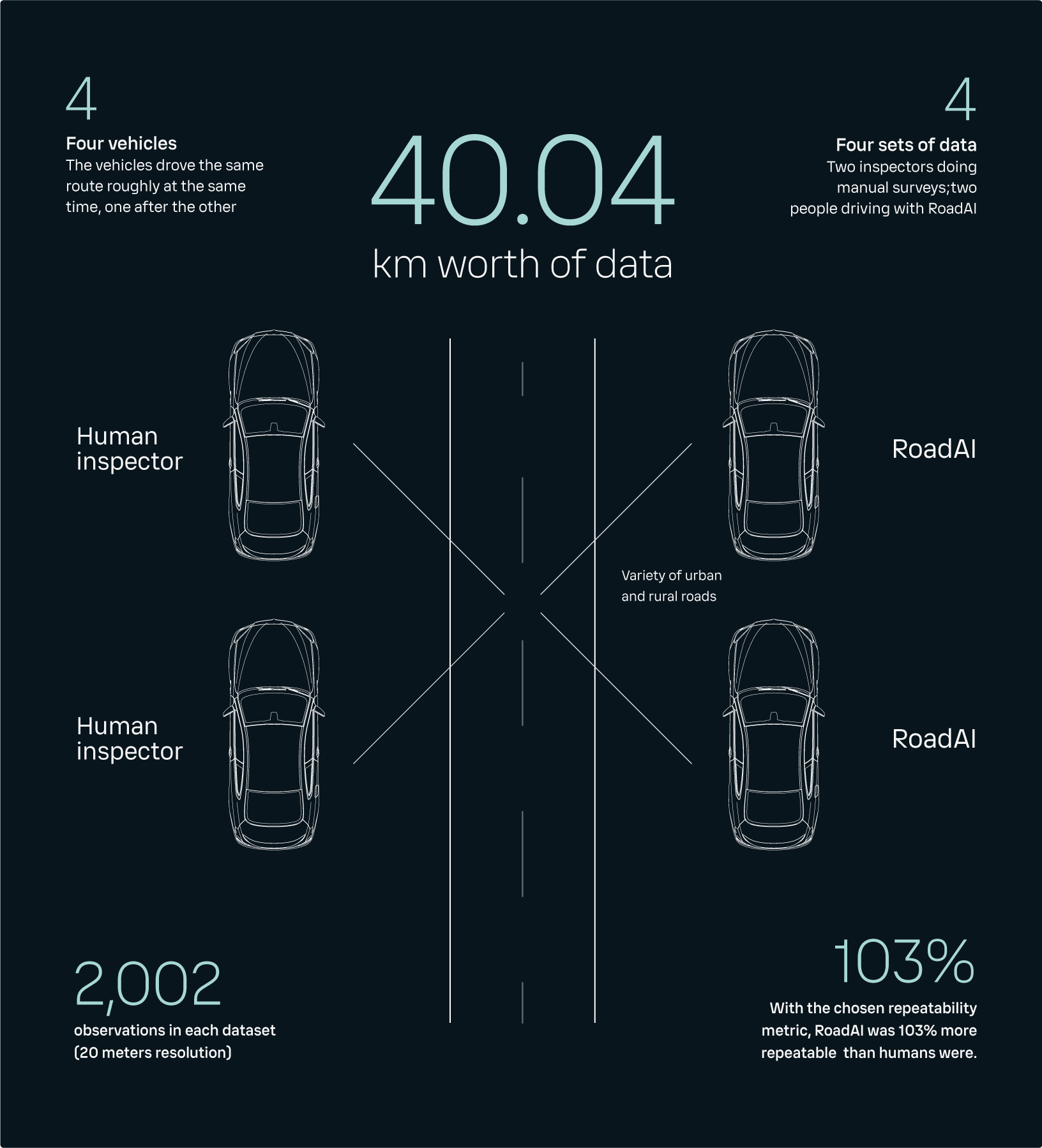

Comparing RoadAI with manual visual survey results
We wanted to compare RoadAI with manual visual survey results to make sure that you can trust it to assess and analyse road conditions accurately and consistently.
40km worth of data
The data was collected by two vehicles following the same 40km route. The study captured 2002 observations is HDMIF format at a 20 meter resolution.
Four datasets
We also collected the data from two human surveyors (H1 and H2) and two RoadAI applications, and compared human with human and RoadAI with RoadAI.
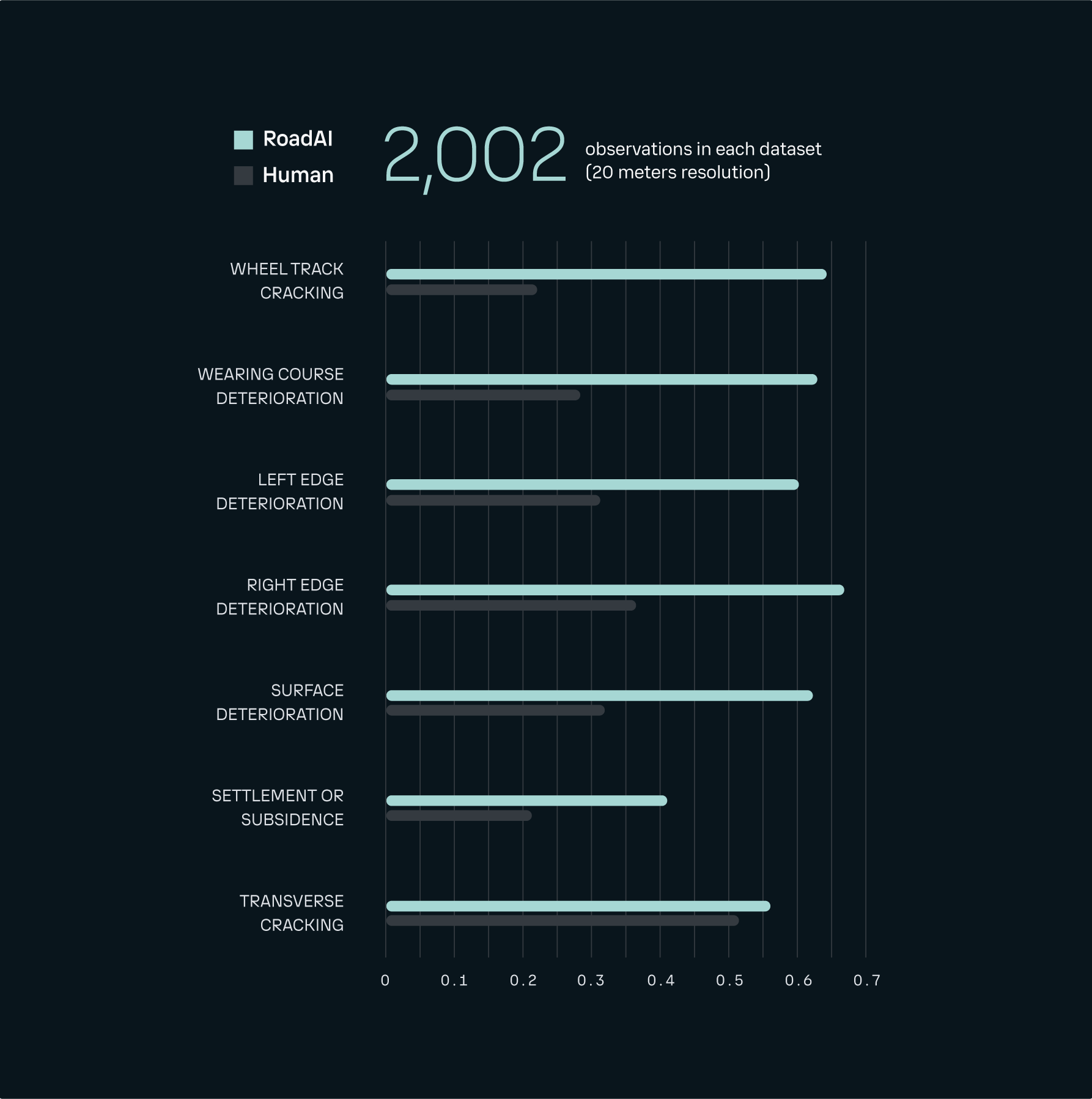

Getting rid of "noise"
What we found was that there can be a lot of variability in human judgment – what academics refer to as ‘noise’. Yet most of the time, individuals and organizations alike are unaware of its presence and impact.
This variability in judgment can make a lot of difference to the management of our highways, where consistent, accurate and unbiased assessments are required. As the survey reveals, when humans are involved, a regional scoring variation on the severity of defects logged starts to appear. In the case of the tests between two humans, both were applying the same survey standard. Yet, this didn’t remove the presence of noise. Not surprising, since one person’s moderate crack is another’s severe crack. There was also an inconsistency in whether the same defects were recorded at all.
As a result, the RoadAI datasets matched to H2 better than H1 matched to H2.
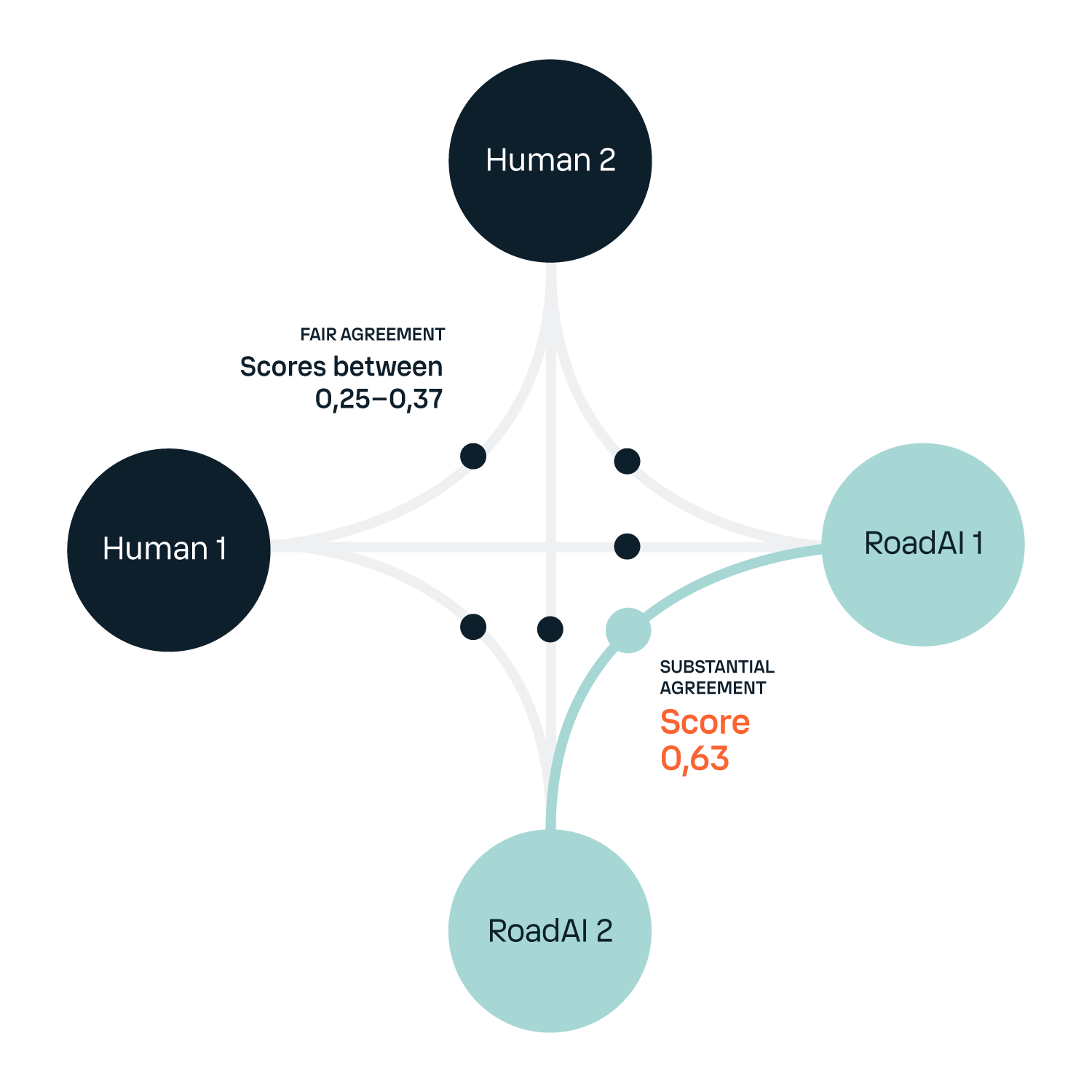
RoadAI effectively records defects and grades their severity
Because it uses AI, the whole process is fully automated, so there’s no human judgement involved. Plus there are no regional differences because it uses the same condition analysis model everywhere. It can also conduct a complete, objective and accurate analysis of road conditions much more quickly and efficiently than human surveyors.
The study reveals that with the chosen repeatability metric, RoadAI was significantly more repeatable than humans (103%). Additionally, RoadAI data from one app compared with data from the other showed half as much variation as data from one human surveyor compared with the other. We were really interested to discover as well that RoadAI datasets matched to H2 better than H1 matched to H2, further highlighting the variations between humans.

Book a demo
RoadAI is an easy-to-use tool that collects high-quality road condition video data with just a regular smartphone as you drive your road network. It provides accurate, up-to-date road condition assessment accessible on any computer.
What to expect:
An overview of the tool and key features
Pricing calculation if desires
Answering any questions you might have
